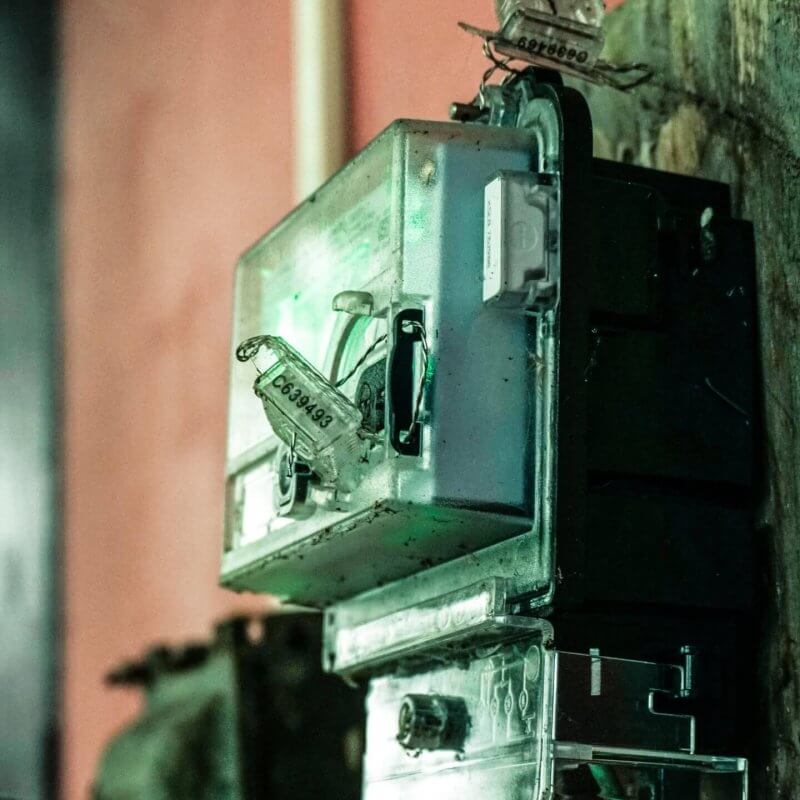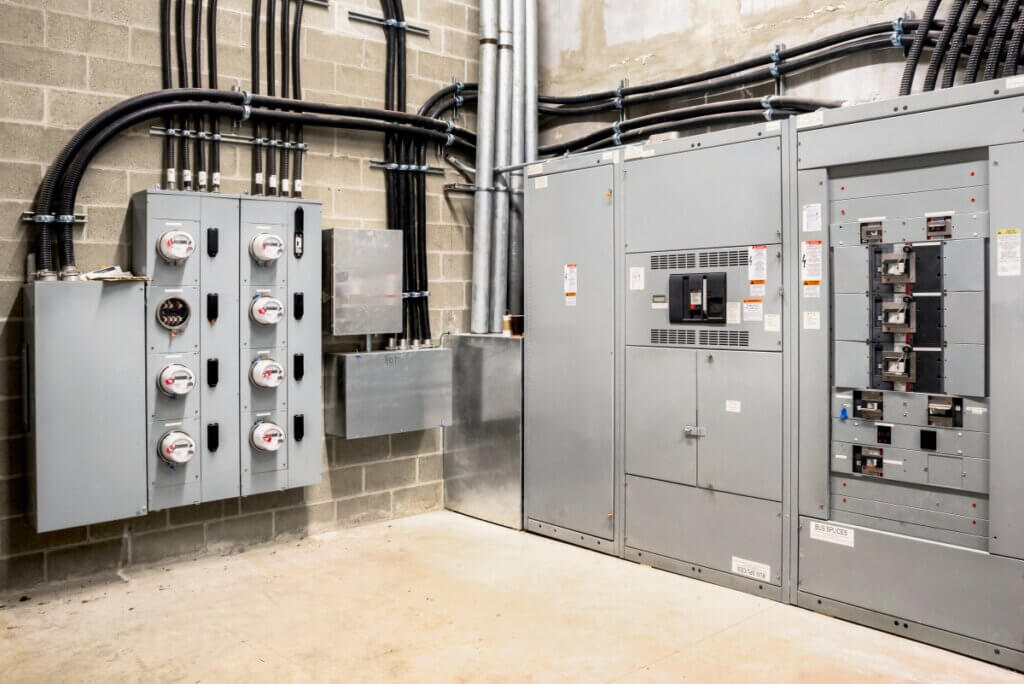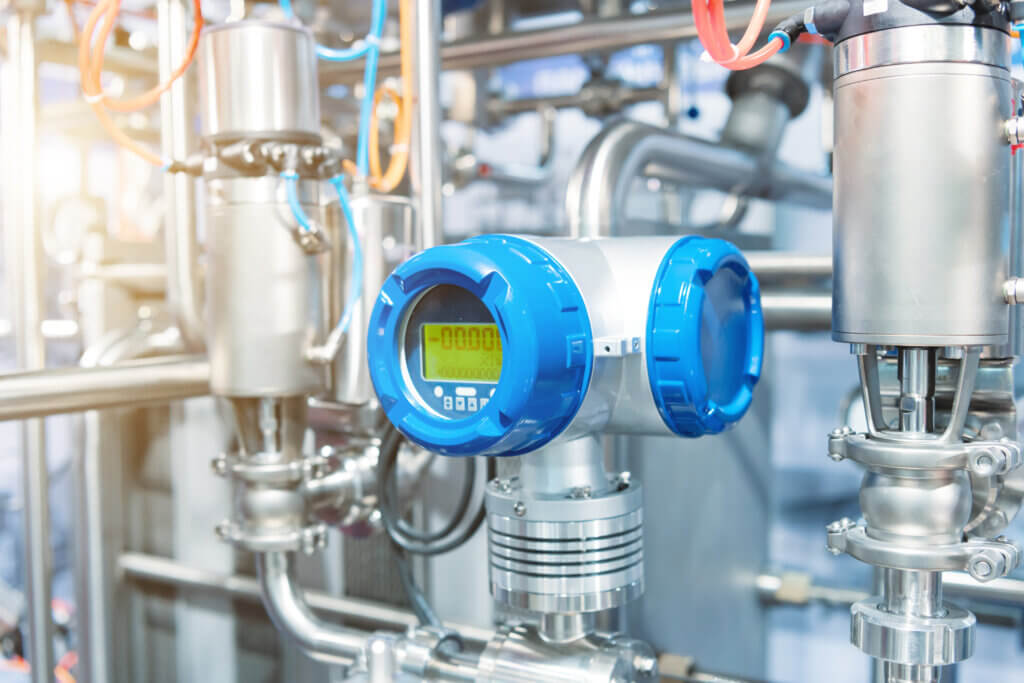Home › Solutions › Energy Monitoring › The differences between commercial and domestic energy meters
Monitor energy & condition of your industrial assets.
Contents
The differences between commercial and home energy meters
Whether it’s for commercial buildings or for your own home, energy monitoring is an important step toward a more sustainable, affordable and efficient future. But what are the key differences and what kind of impact do commercial or industrial energy meters make, compared with domestic energy meters?
First we need to understand what types of energy meters and sub-meters there are.

Types of domestic energy meters
Typically homes aren’t fitted with sub-meters, in most homes you’ll find one electricity meter and one gas meter. There are different types of energy meters you might find in domestic settings:
Standard meters
You’ll be familiar with these meters, which are typically found in UK homes. They use a mechanical interface to show your energy usage in KWh.
Dial meters
Similar to a standard meter but not as common, a dial meter still shows your consumption KWh but this time the interface is, you guessed it, a dial.
Digital meters
Frequently found in modern UK homes, digital electrical meters have additional functionality and settings that can be adjusted in the interface
Prepayment meters
As the name suggests a ‘prepayment’ meter enables pay-as-you-go tariffs, meaning users can only use the energy they have already paid for. It’s worth noting that unit rates for prepayment meters can be higher, meaning it can be more costly to use one of these meters.
Economy 7 and Economy 10
These much rarer meters are used for people who consume energy at off-peak times – night time. These types of energy meter give two readings: one during peak hours and one during off-peak hours.
Smart meters
Very common in modern homes, these meters allow people to see their consumption in real-time. Unfortunately they’re limited in the data they can offer, usually only gas and electricity consumed and no further information on which particular assets or appliances have contributed to the consumption.
Types of commercial energy meters
Commercial properties will often have sub-meters to help separate and identify energy consumption in various areas across an estate. For example, this could be floors or rooms in a building; each floor might have it’s own sub-meter, to keep track of energy use for that floor only. This information all feeds from the main utility meter.

Single-rate meters
Great for your typical Monday to Friday business, these meters are very popular as you are charged a single, flat rate no matter what time of day it is. Most single-rate meters are the standard ones you might find in your home.
Two-rate meters
Like the aforementioned “economy 7” and “economy 10” meters, two rate means you will be charged for two different periods: peak and off-peak. Another example of these meters is an “Evening and weekend” meter, which tends to be well suited to businesses in hospitality such as pubs and restaurants.
Three-rate meters
As you may have guessed, this type of meter will charge you at three different periods. Typically, evening, weekend and night time.
Half-hourly meters
These meters will submit readings to your supplier every thirty minutes. Large businesses that consume over 100kW every thirty minutes are required to use these meters.
Smart meters
By mid-2025 all businesses and households in the UK will be offered smart meters. These greatly help users to monitor and measure their consumption – and therefore make more informed decisions on how they consume energy.
Multi-site meters
Popular with retailers who have many locations, multi-site meters mean you can combine energy usage from many locations into one, much easier to manage energy package. This often works out cheaper too!
Other types of industrial meters

While energy meters are very common, there are many types of industrial meters, which can be used for monitoring various different environmental factors, such as water meters, flow meters and Hygro meters.
Water meters
As you might imagine, water meters are devices that measure how much water you use. Similar to that of your gas and electricity meters, suppliers use readings from the meter to calculate how much to charge. These types of meters are frequently used in water and sewage services.
Flow meters
A flow rate measuring used to detemrine the linear or nonlinear mass and volumetric flow of a liquid or gas. Flow meters can have a number of different names from flow gauge, flow indicator, liquid meter and flow rate sensors. How they are named depends on their indistrial use. Their purpose is to improve precision, accuracy and the resolution of fluid measure.
Hygro meters
Typically, you’ll either see digital or mechanical versions of these meters. Mechanical hydrometers, use a hair or string to measure the moisure content in the air. When it comes into contact with water vapor, the hair or string will expand. This expansion is then used to calculate the relative humidity.
Digital meters use sensors (either digital or analog) to measure the moisture content in the air and these tend to provide more accurate readings than manual humidity gauge which are susceptible to human error.
Hydro / Lacto meters
Interested in learning more?
If you would like to find out why real-time energy monitoring is vital to your business, then get in touch, we can provide the tools to help you improve efficiency, maximise yield and reduce waste energy consumption.
